QuestionQUESTION: We found what we think to be a squirrel tree frog on our garage door. My kids have brought it in, and we have it in a quart sized plastic container with bark and water. We are not sure what to feed it, or what kind of habitat to put it in. We already have a Red-eyed treefrog, and a bearded dragon. We would like to keep him, but would like to provide the proper habitat so that he will live. Please advise what steps we should take.
Thank you!
ANSWER: Hi Lisa,
Your experience with the Red-eye will serve you well. The various "Hyla" members of North American treefrogs are not very demanding to keep. I would keep him separate from your red-eye to prevent disease transmission between the two.
Like your red-eye, he is a climber and more active at night. He will appreciate an enclosure with a bit of height as well as some leafy plants (like pothos) or upright pieces of bark to hide in during the day. The bottom of the enclosure can be coconut mulch or even plain potting soil and a light daily misting should be sufficient. He will need access to a small shallow container of treated water. I use one of the numerous aquarium water treatments available that neutralizes both chlorine and chloramines. Your red-eye should have treated water as well if he does not already.
If your house is strongly air-conditioned then you might want to supply a very low wattage light during the day, otherwise normal room temps in the 70 to 80F are fine.
Small frogs need small food which can be a bit more of a hassle depending on your pet store (or your children's ability to catch them!) Small crickets that are about as long as the width of his head can be offered. He will also likely take any small "wild" food like spiders and soft bodied insects that you can find.
You can lightly dust his food with a calcium/vitamin supplement about once a week or so.
---------- FOLLOW-UP ----------
QUESTION: Thank you for the great advice. The little squirrel treefrog is doing very well. I now have a question regarding our red-eyed tree frog. He has developed a spot on his back and we are not sure what it is or what to do for it. We noticed it last night. He changes colors going from a light lime green to a darker green. You do not notice it when he is light green, but when he turns darker green, the spots stay a pail green with a hint of brown coloring in it. Is it some kind of funus? Is there anything we can do?
Any advice is welcomed!
Lisa
AnswerHi Lisa,
Personally, I would not attempt any treatment based on a single spot *but* I would keep a very close eye on it to determine if it is getting larger or if others develop. Keep a close watch on his underside as well, when he is awake and fully spread out.
Captive frogs can be prone to bacterial infections and these can manifest as spots or lesions developing on the skin. It has been given the common term "red leg" due to its affect on the small blood vessels on the underside of the legs causing the skin to turn red.
Keeping the water and environment clean and using treated water are two of your best defenses against these infections. The other big one is to avoid handling your frog which kids tend to want to do.
Frog skin is like a mucous membrane and the salts, oils and even the texture of human skin can disrupt the protective coating of frog skin and cause invisible entry points for infection. The stress of being handled contributes as well.
In my experience, when red-eyes are ill you may notice them being awake during the day and spending time in the water (when they would normally be asleep). They also frequently don't curl up into a wad as tightly to sleep during the day but remain somewhat spread out.
If you notice anything like this or more skin discolouration then a vet is obviously your best option. If that is not possible then some home treatments for bacterial infections have been successful. Soaking in a tetracycline solution which is sold as a fish medication is probably the most commonly recommeneded approach.
I hope this turns out to be nothing serious.

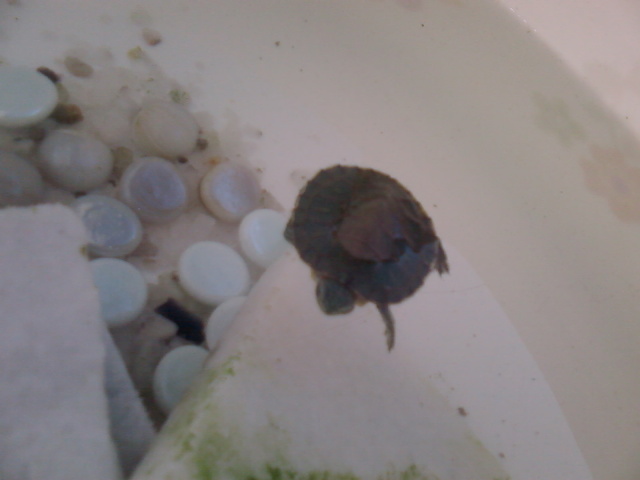 RES badly ill !?!
QuestionDUSKY
QUESTION: well hello there! this i
RES badly ill !?!
QuestionDUSKY
QUESTION: well hello there! this i
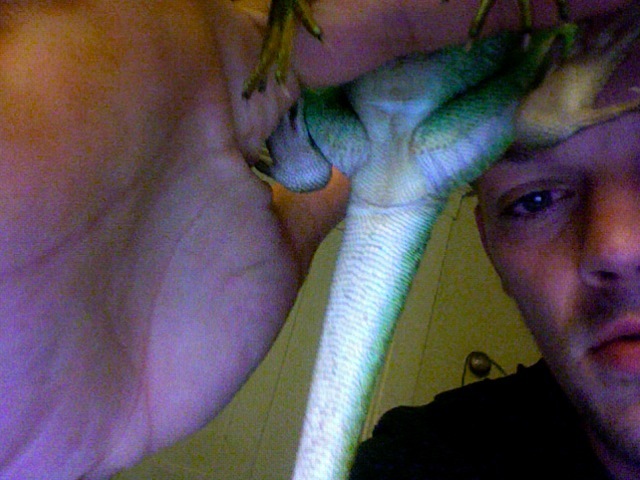 What is the sex of my Water dragon
Question
Chinses Water Dragon
Could you plaese tell me
What is the sex of my Water dragon
Question
Chinses Water Dragon
Could you plaese tell me
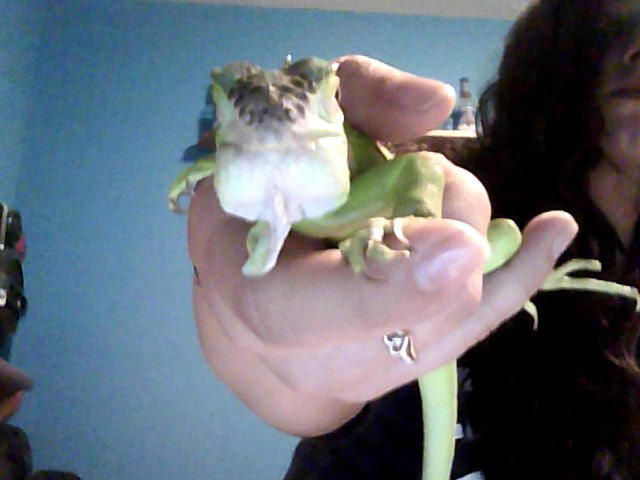 Iguana injury
Question
lower jaw bigger
Hi! My name is Megan.
Iguana injury
Question
lower jaw bigger
Hi! My name is Megan.
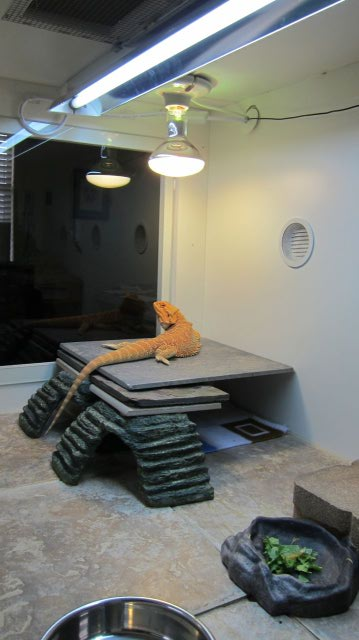 Pics of viv with Arcadia T-5 D3 12% and PowerSun Mecury Vapor Bulb
Question
Hot Side Cool Side
Hi Tracie!!
As
Pics of viv with Arcadia T-5 D3 12% and PowerSun Mecury Vapor Bulb
Question
Hot Side Cool Side
Hi Tracie!!
As
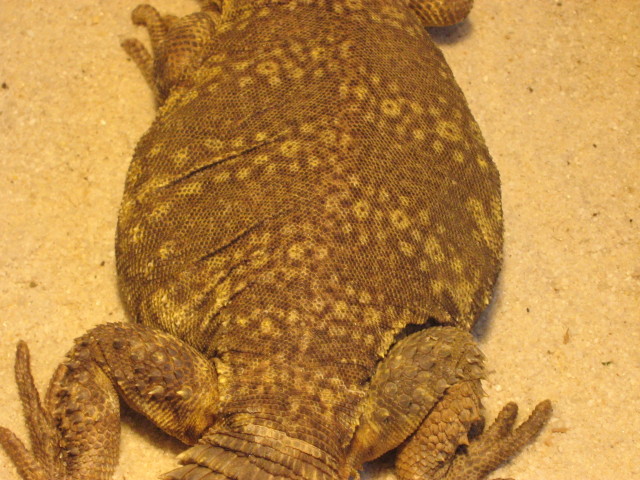 Gravid or fat?
Question
Gravid or just fat?
Hi again..i forgot to ment
Gravid or fat?
Question
Gravid or just fat?
Hi again..i forgot to ment